
The cone-shaped mold was filled with sugar and set on a syrup jar. A white clay slip was poured over the sugar and the mold and jar were placed in a heated room. As the sugar and clay cap dried, water from the clay percolated slowly through the sugar, separating out the molasses, which dripped into the jar.
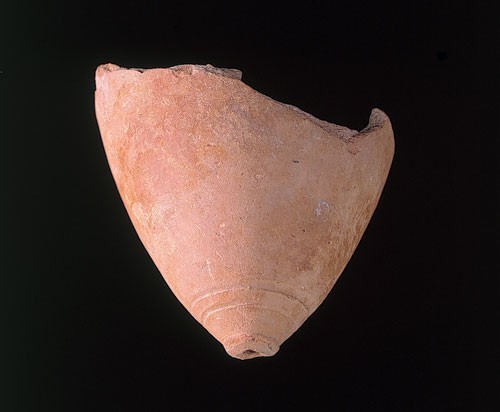
Sugar mold, Alexandria, ca. 1804–1828. Unglazed earthenware, hard sandy paste. H. 4". The tip has a 1/4-inch opening. (All objects courtesy Alexandria Archaeology; photos, Gavin Ashworth.)

Syrup jar, probably Alexandria, ca. 1804–1828. Earthenware with lead-glazed interior. H. 8 1/2", d. of rim 4 1/2". The heavy rim, made to support the weight of the sugar mold, is a distinctive feature of jars used in sugar refining.
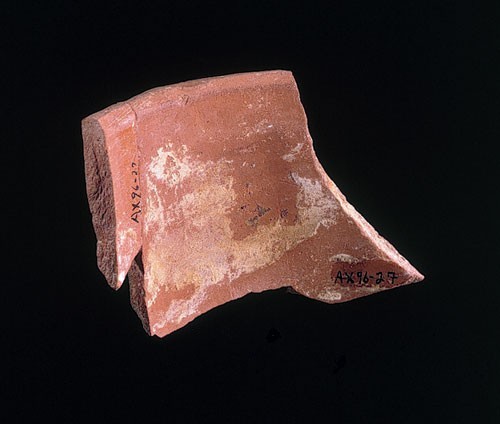
Sand-tempered sugar mold, Alexandria, ca. 1804–1828. Unglazed earthenware, hard sandy paste. D. of rim 7". The molds range in size from seven to twelve inches in diameter, and probably were two to three feet tall. The rim is chipped from the workers tapping it to release the sugar loaf. White clay from the claying process can be seen on the interior. The tip of a similar mold is illustrated in fig. 2.
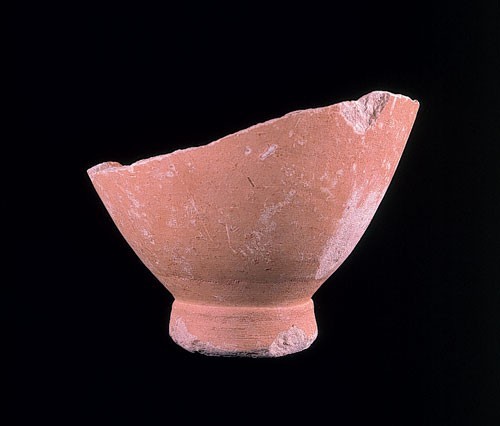
Sugar mold, Sadirac, France, late eighteenth century. Unglazed earthenware, light-colored marbled clays. D. of tip 2 1/4", D. of rim 12". The tip has a 1-inch opening. Similar molds found in France are 24–30 inches tall.
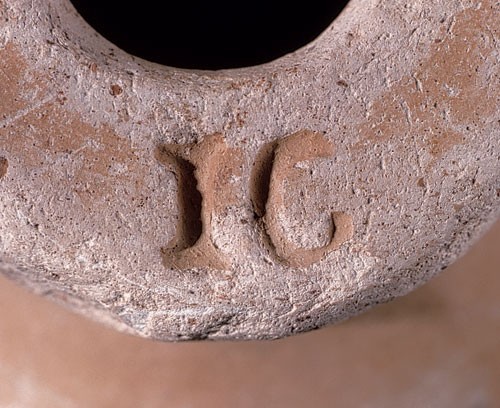
Detail of the stamped mark “IG” from the French mold illustrated in fig. 5.

Syrup jar rim, Alexandria, ca. 1804–1828. Earthenware with lead-glazed interior. D. 4 3/4". Marked “J. MILLER, ALEX.” Fifteen marked jars were found and are similar in appearance to the thousands of unmarked jars.
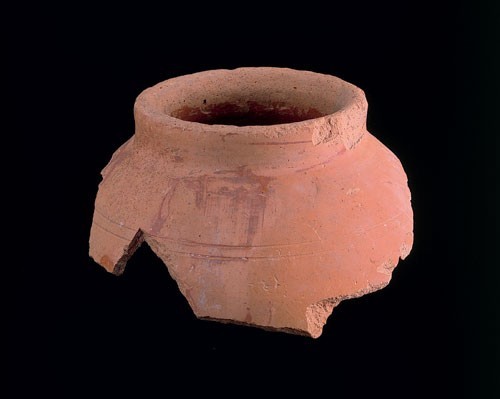
Syrup jar rim, probably Alexandria, ca. 1804–1828. Earthenware with lead-glazed interior. D. 6". This form is unusual, and the jar is larger than those of the standard shape with rounded rim. Diderot’s Encyclopaedia of 1722 illustrates jars with a similar straight rim, supporting the conical sugar molds. Three of these vessels were found at the Moore-McLean Sugar House
